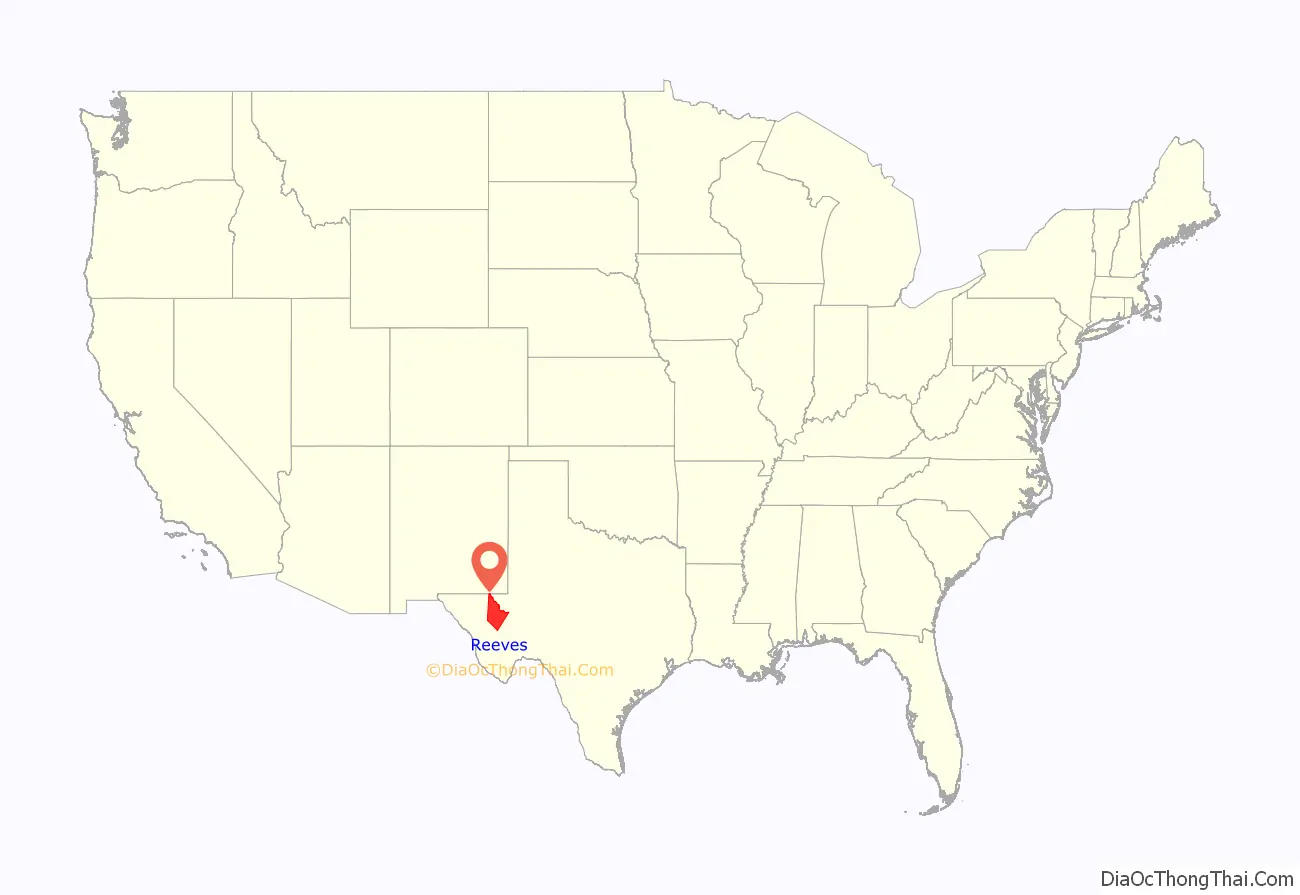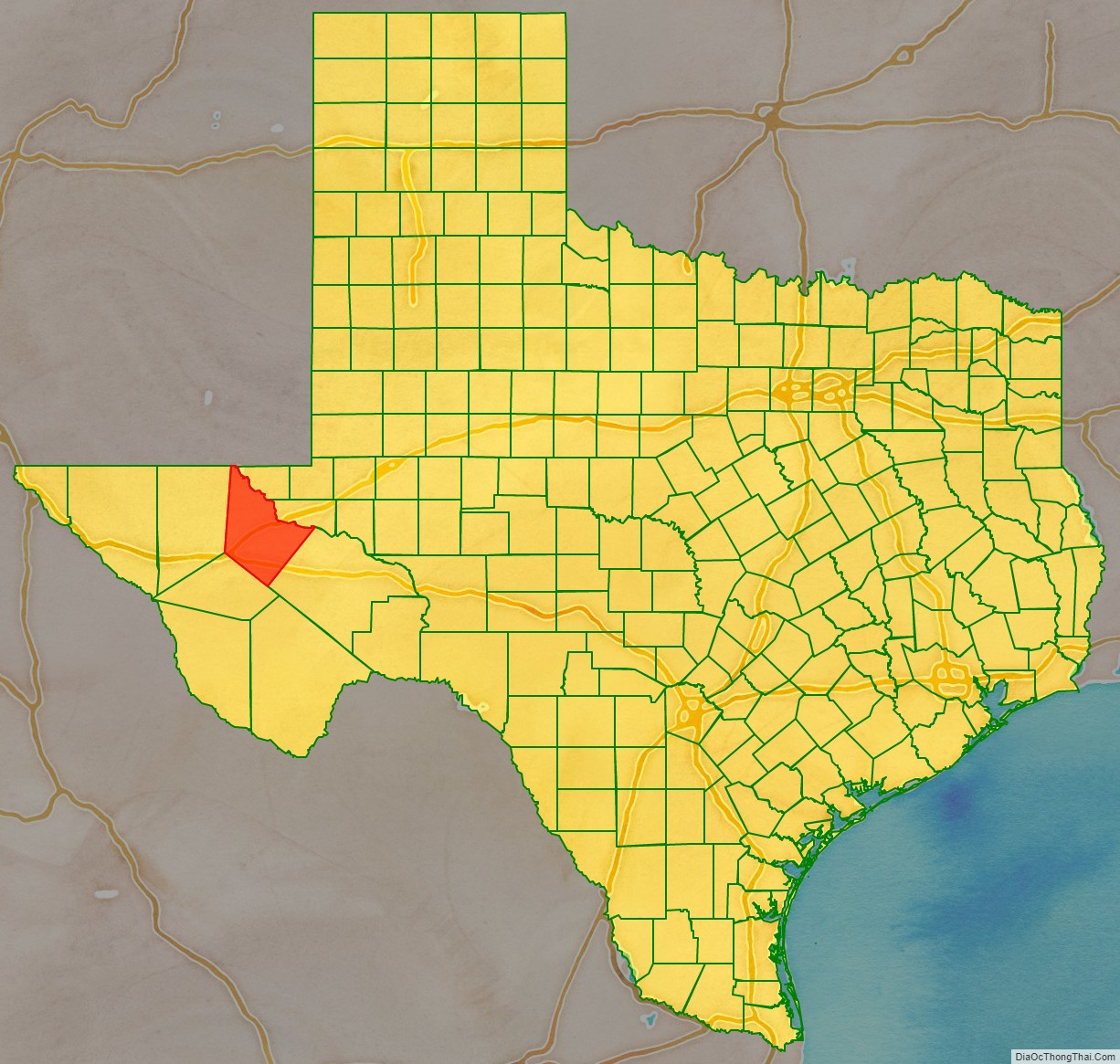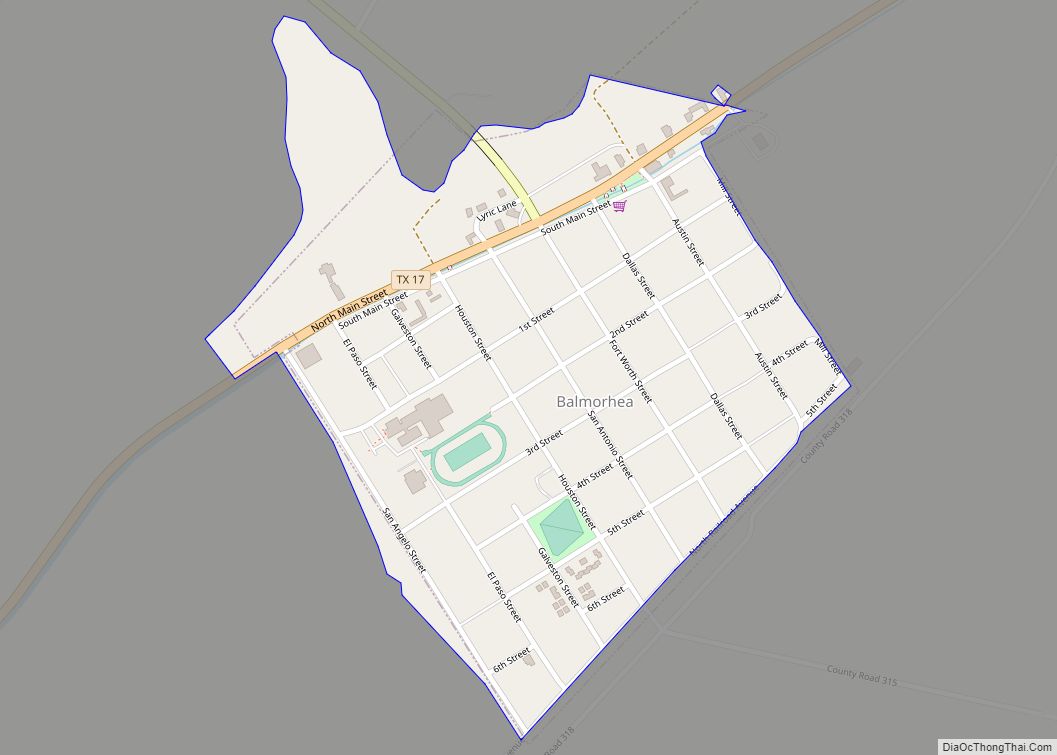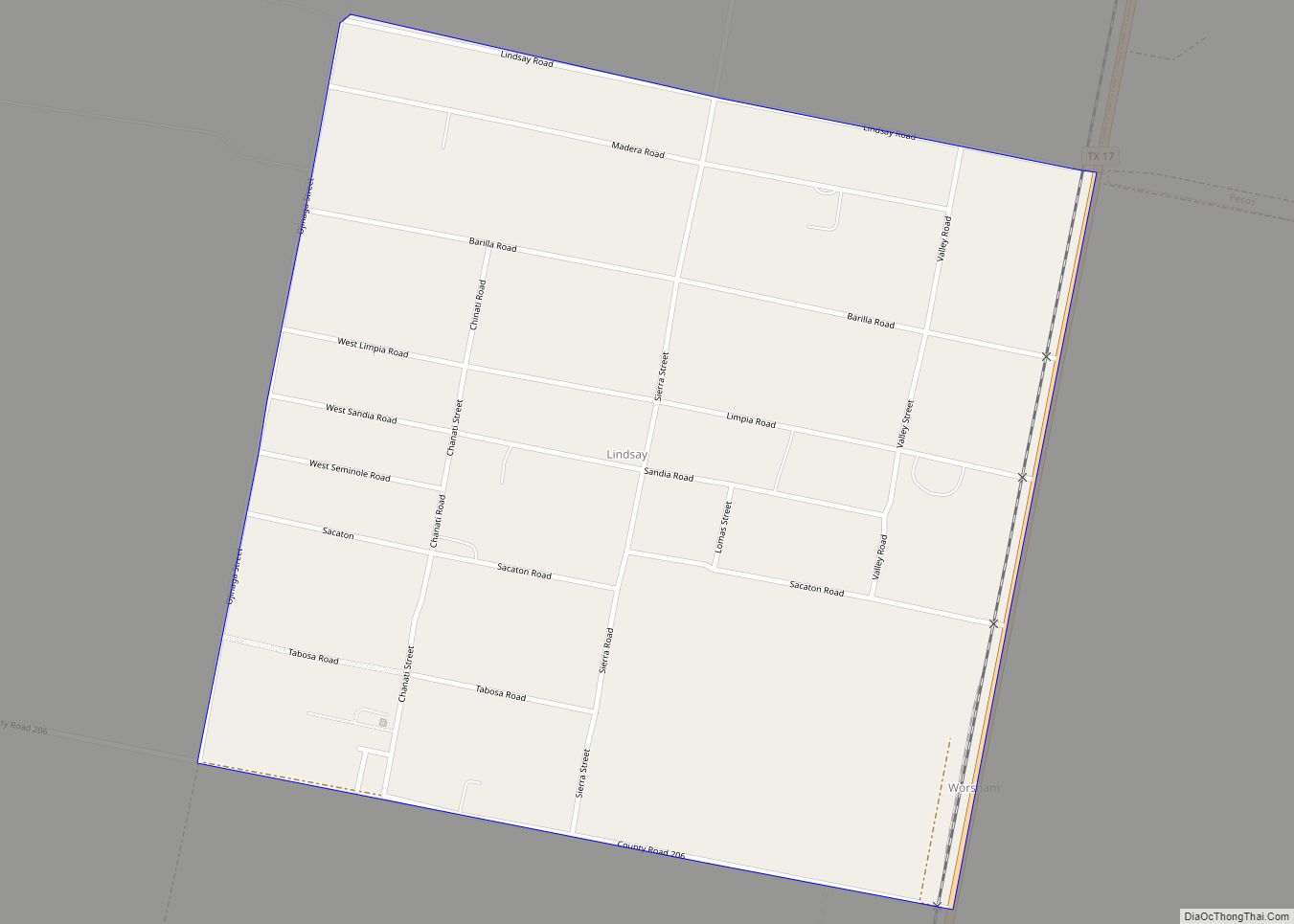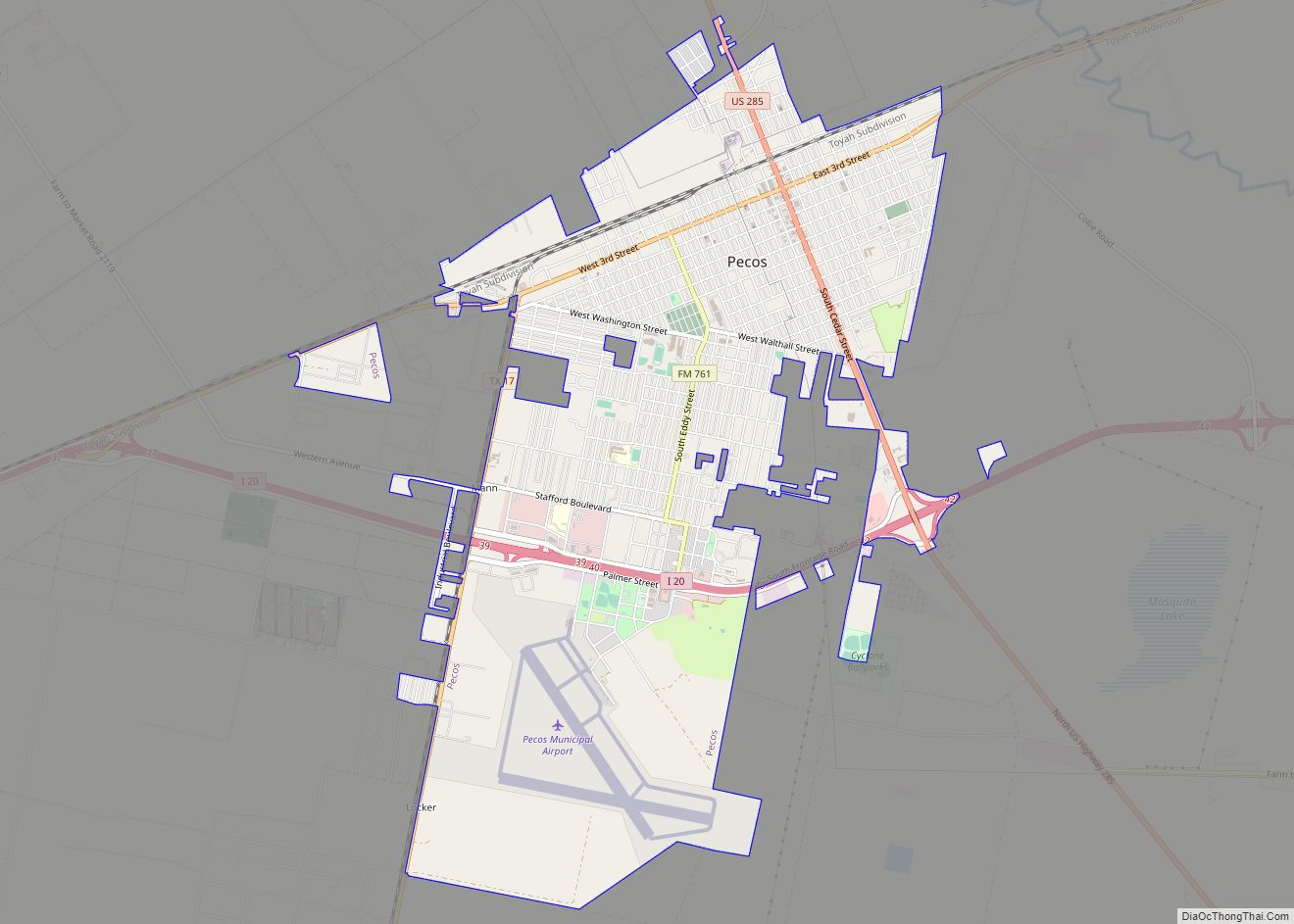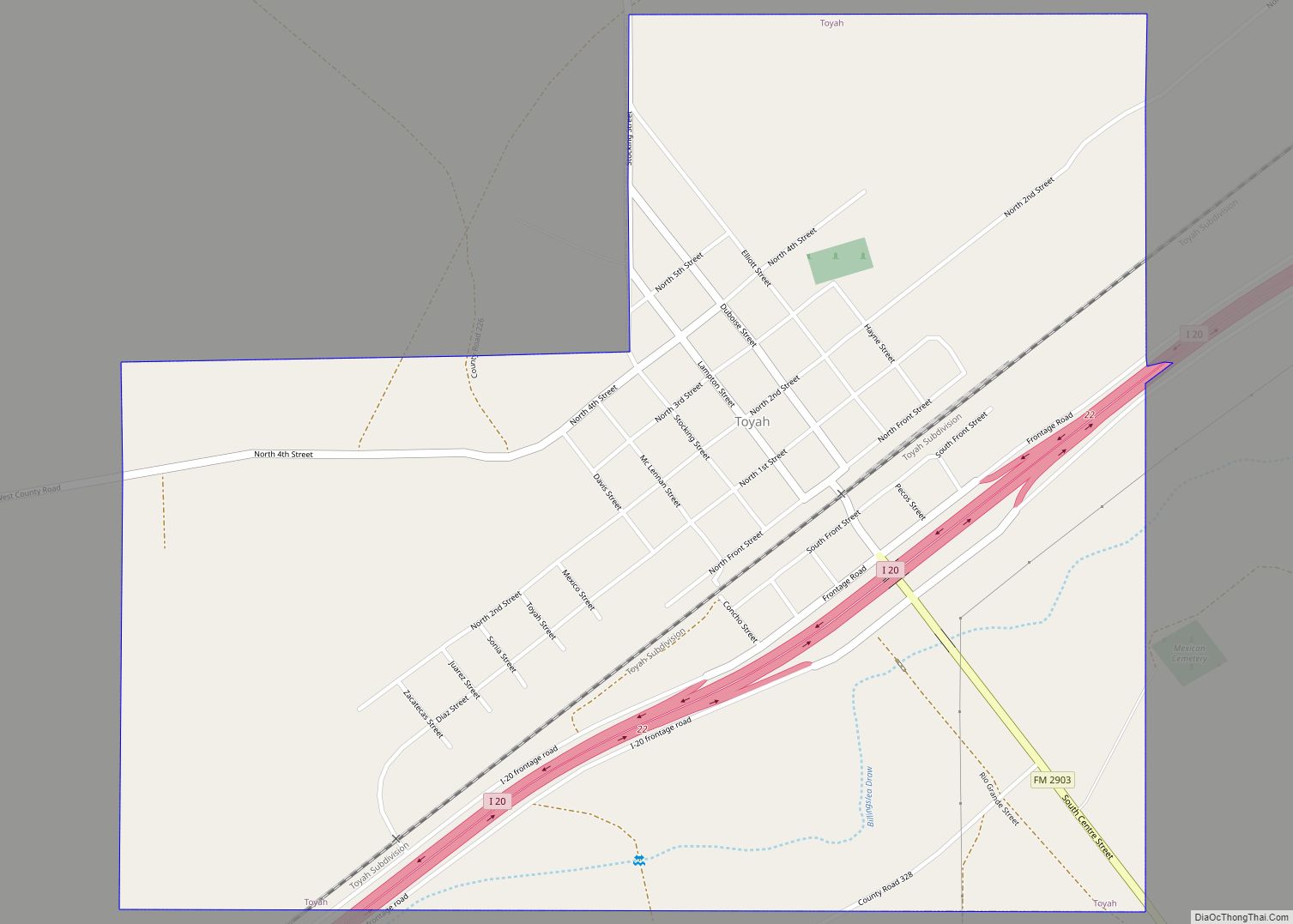Reeves County is a county located in the U.S. state of Texas. As of the 2020 census, its population was 14,748. Its county seat and most populous city is Pecos. The county was created in 1883 and organized the next year. It is named for George R. Reeves, a Texas state legislator and colonel in the Confederate Army. It is one of the nine counties that comprise the Trans-Pecos region of West Texas. Reeves County comprises the Pecos micropolitan statistical area.
| Name: | Reeves County |
|---|---|
| FIPS code: | 48-389 |
| State: | Texas |
| Founded: | 1884 |
| Named for: | George R. Reeves |
| Seat: | Pecos |
| Largest city: | Pecos |
| Total Area: | 2,642 sq mi (6,840 km²) |
| Land Area: | 2,635 sq mi (6,820 km²) |
| Total Population: | 14,748 |
| Population Density: | 5.2/sq mi (2.0/km²) |
| Time zone: | UTC−6 (Central) |
| Summer Time Zone (DST): | UTC−5 (CDT) |
| Website: | www.reevescounty.org |
Reeves County location map. Where is Reeves County?
History
Native Americans
Prehistoric Clovis culture peoples in Reeves County lived in the rock shelters and caves nestled near water supplies. These people left behind artifacts and pictographs as evidence of their presence. Jumano Indians led the Antonio de Espejo 1582–1583 expedition near Toyah Lake on a better route to the farming and trade area of La Junta de los Ríos. Espejo’s diary places the Jumano along the Pecos River and its tributaries. The Mescalero Apache frequented San Solomon Springs to irrigate their crops. In 1849, John Salmon “RIP” Ford explored the area between San Antonio and El Paso, noting in his mapped report the productive land upon which the Mescalero Indians farmed.
County established and growth
The state legislature formed Reeves from Pecos County in 1883, and named it after Texas legislator and soldier George Robertson Reeves. The county was organized in 1884. The town of Pecos was named as county seat.
Toyah Valley farmers George B. and Robert E. Lyle were the first Anglo settlers 1871. White settlers started arriving in the area four years later, lured by open-range ranching. For the remainder of the century, the county economy was dependent upon farming and ranching as it moved into the manufacturing and oil industries of the 20th century.
The Texas and Pacific Railway built through Reeves County in 1881, with stations at Pecos and Toyah. By 1890, the Pecos River Railway had built from Pecos to New Mexico. Toyahvale, which means “flowing water”, became the western terminus of the railroad.
Balmorhea State Park was built at Toyahvale by the Civilian Conservation Corps. The park was deeded to the State of Texas in 1934 and opened to the public in 1968.
Pecos Army Air Field was one of the 120 airbases that trained the pioneer Women Airforce Service Pilots to fly military aircraft. At the Pecos installation, WASP flew AT-6, UC-78, and AT-17 aircraft in engineering tests, administrative duties, and transporting freight. The base was activated in 1942 as a World War II pilot school. The base was deactivated in 1945. At its peak, the base population of 4,034 rivaled the town of Pecos in size. Portions of the base were sold off over the years, with Pecos Municipal Airport retaining the remainder.
Pecos is the site of the largest private prison in the world, the Reeves County Detention Complex, operated by the GEO Group.
Reeves County Road Map
Geography
According to the U.S. Census Bureau, the county has a total area of 2,642 square miles (6,840 km), of which 6.7 sq mi (17 km) (0.3%) are covered by water.
Major highways
- Interstate 10
- Interstate 20
- U.S. Highway 285
- State Highway 17
Adjacent counties
- Eddy County, New Mexico (north/Mountain Time Zone)
- Loving County (northeast)
- Ward County (east)
- Pecos County (southeast)
- Jeff Davis County (south)
- Culberson County (west)
